Under FOIA: departments’ responses to freedom of information requests
Gavin Freeguard looks at the latest quarterly figures on the demands on, and responses of, different government departments.
Part of any government department’s work is to respond to inquiries from MPs, journalists and the public, which includes freedom of information requests. These allow anyone to request recorded information from public bodies, including government departments. Gavin Freeguard looks at the latest quarterly figures on the demands on, and responses of, different government departments. (Click on the images to enlarge.)
Between July and September (Q3) 2014, monitored government bodies received 11,234 freedom of information requests – only two quarters this parliament had fewer requests. 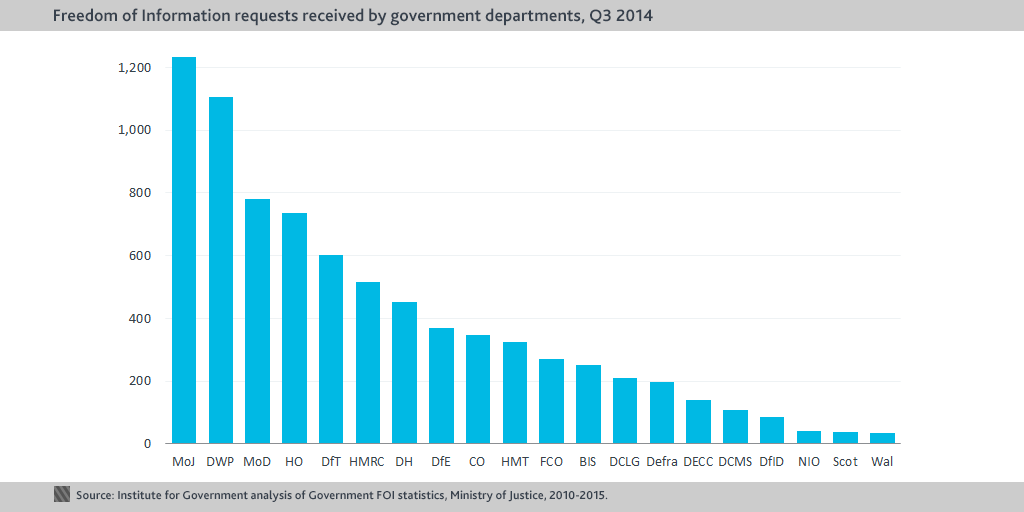
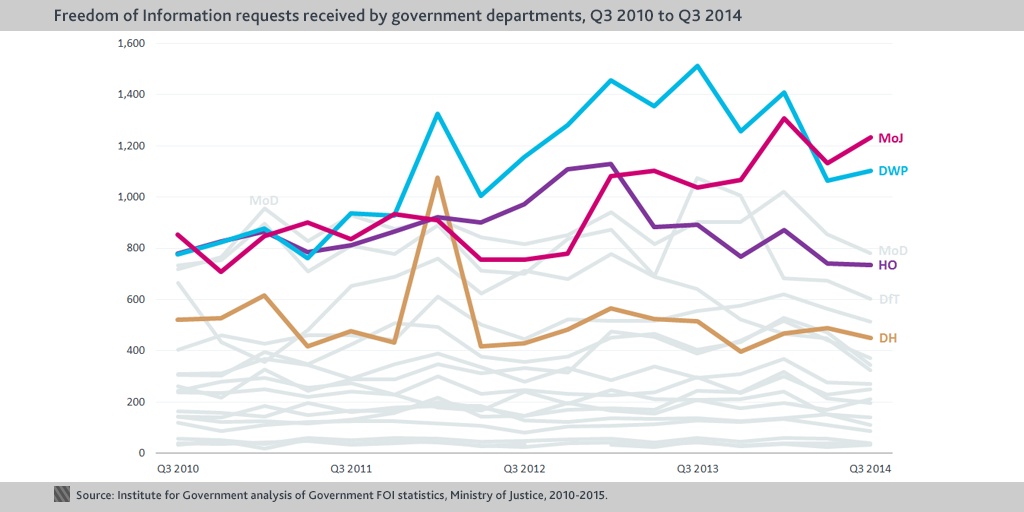
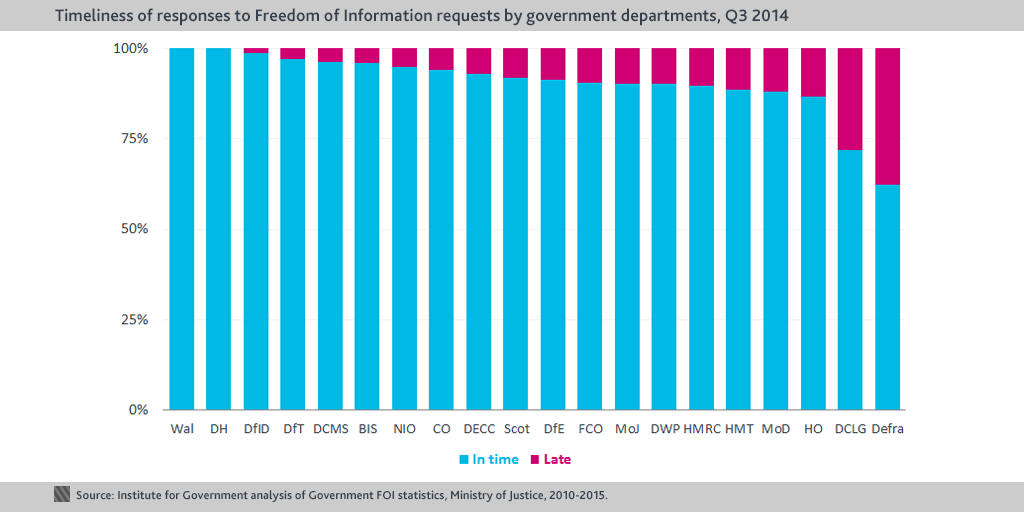
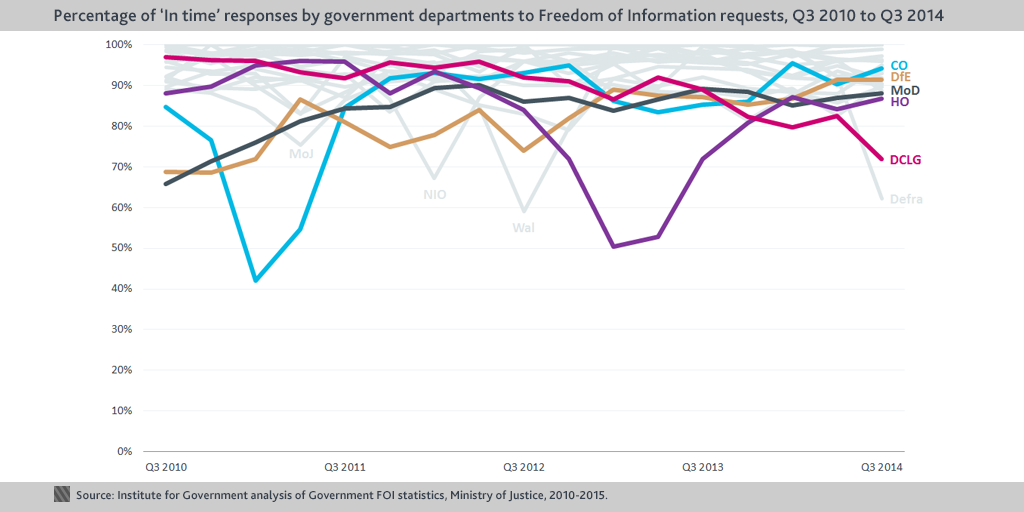
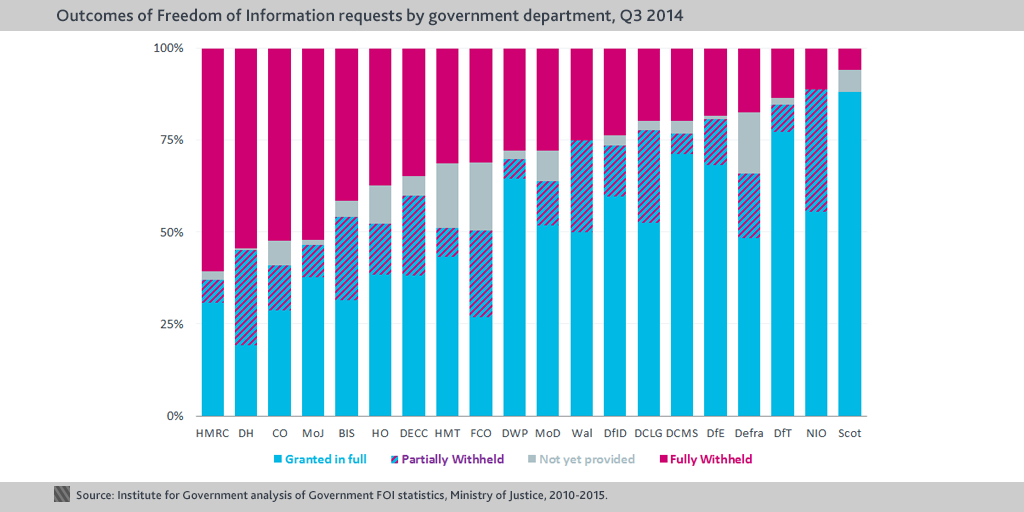
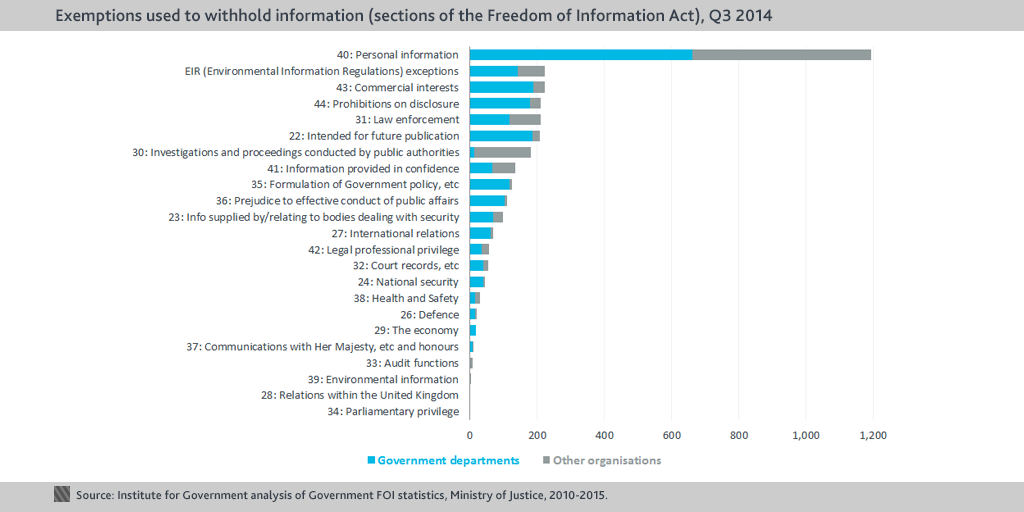
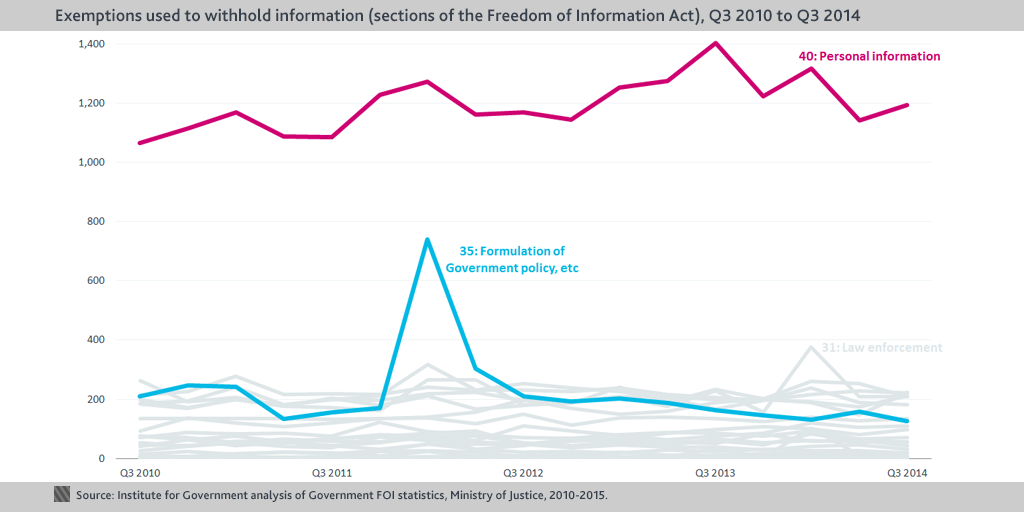
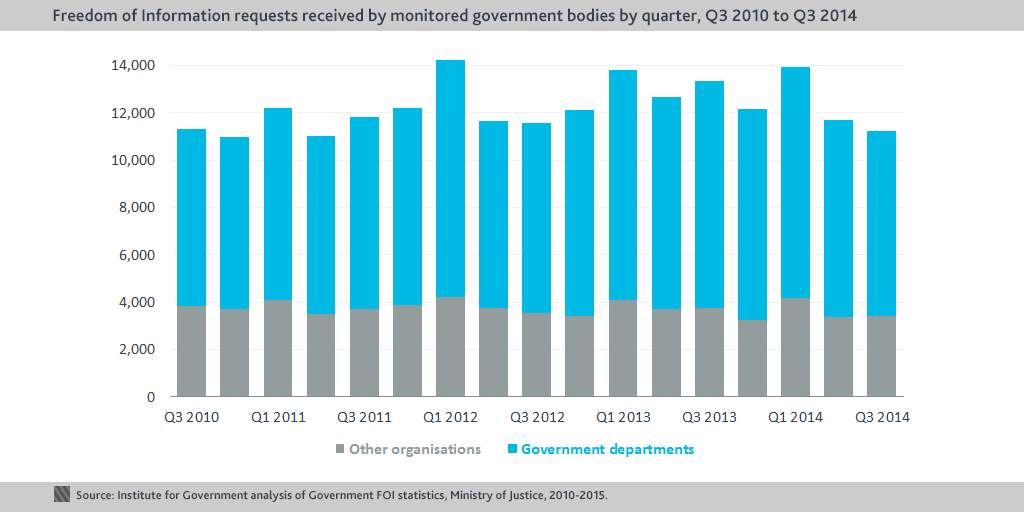
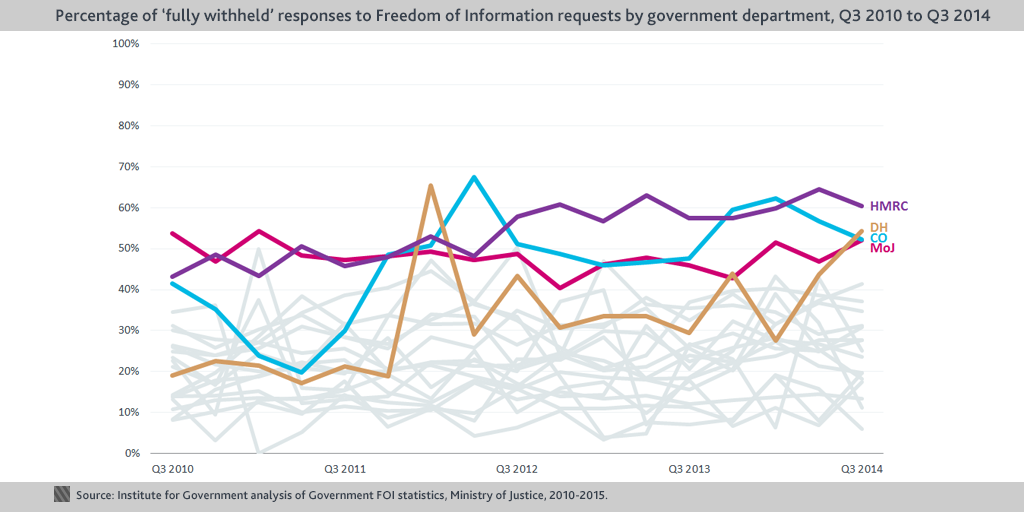
- Topic
- Civil service
- Publisher
- Institute for Government